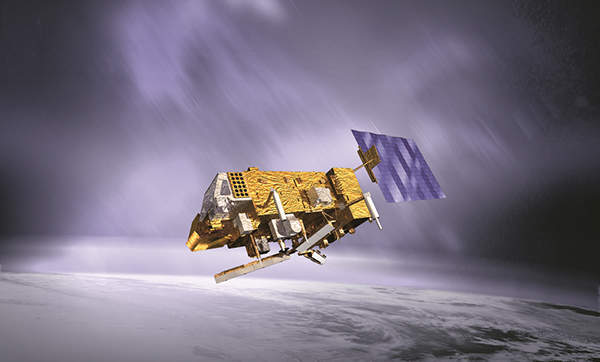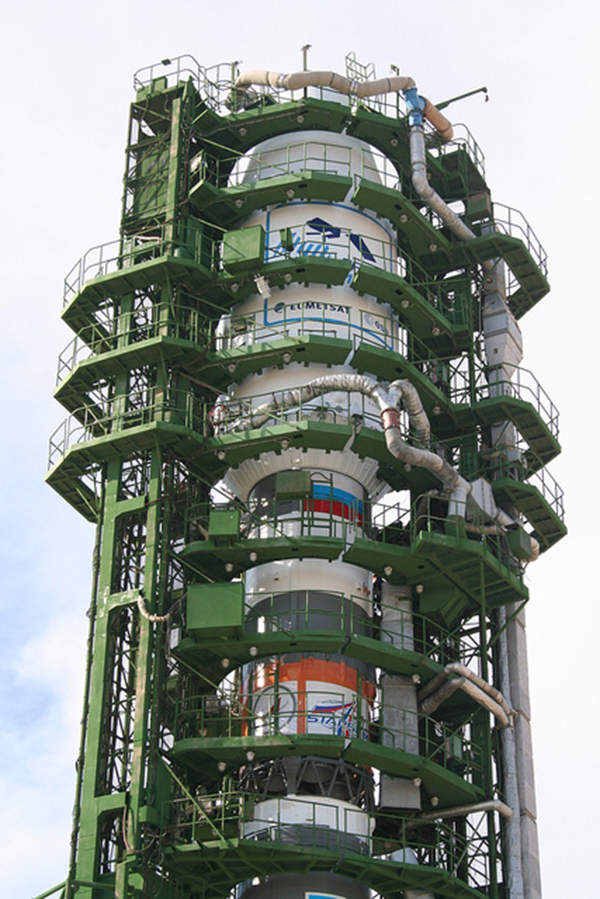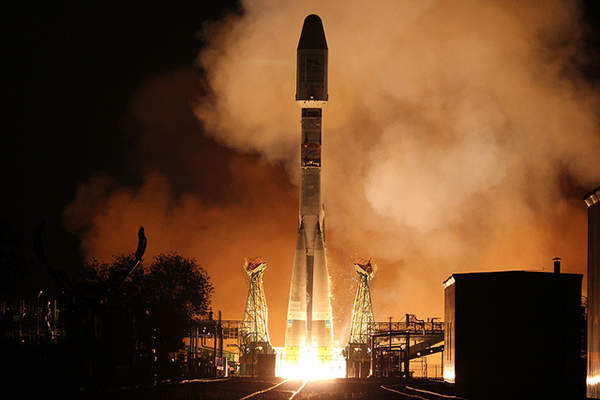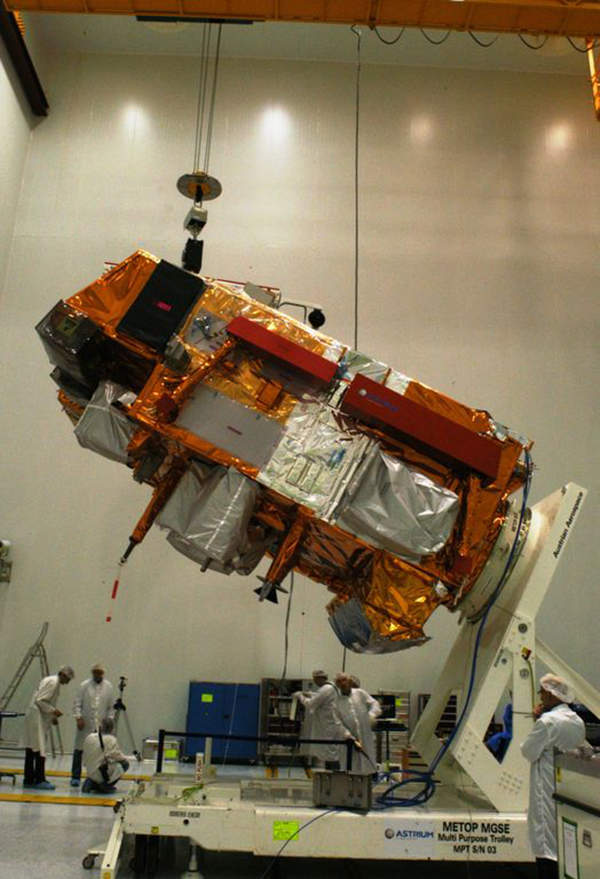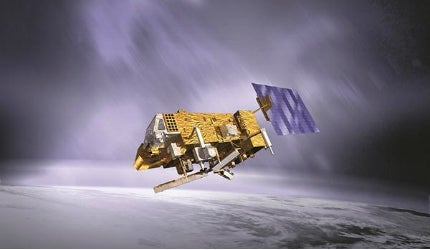
MetOp-B is the largest meteorological satellite to date and was launched into orbit in September 2012. The satellite monitors weather patterns and climate change; it also provides accurate and reliable medium and short-range weather forecasts for Europe.
It was launched abode Soyuz rocket from the Baikonur Cosmodrome in Kazakhstan. Three days after the launch, EUMETSAT took control of the satellite operations.
MetOp-B is the second in the three polar-orbiting spacecraft series of the Meteorological Operational (MetOp) satellite programme intended for weather observations until 2020. It is jointly developed by the European Space Agency (ESA) and EUMETSAT (European Organisation for the Exploitation of Meteorological Satellites).
Previously launched MetOp-A was the first satellite in the series and entered orbit in October 2006. MetOp-C, the third satellite in the line, has been scheduled for launch in 2017.
Design of MetOp-B meteorological satellite
The MetOp-B meteorological satellite was designed and built by EADS-Astrium. It will replace its predecessor, MetOp-A at low-altitude. The new satellite measures 17.6m x 6.6m x 5.2m. It has a liftoff mass of 4,085kg and payload mass of 931kg, with a lifespan of five years.
The Goddard instrument team supported Astrium in the integration of the MetOp-B payload module. The payload was integrated with the spacecraft bus in Toulouse, France. In March 2012, the spacecraft was transported to the launch centre in Baikonur, Kazakhstan.
Onboard systems and equipment
Related project
ASTRA 2F Communication Satellite, Luxembourg
The ASTRA 2F communication satellite will support direct-to-home (DTH) and next-generation broadband services in Europe, Middle East, Africa and sub-Saharan Africa.
MetOp-B has 13 instruments onboard, most were built by Astrium at its manufacturing sites located in the Netherlands, UK, Germany, France, and Spain.
The Astrium-built instruments include the advanced scatterometer (ASCAT), which is a radar system used for measuring the speed and direction of wind above oceanic surfaces; the microwave humidity sounder (MHS) for measuring atmospheric humidity; and the global navigation satellite system receiver for atmospheric sounding (GRAS), which is a GPS receiver that supplies atmospheric sounding data.
The instruments developed by NASA and National Oceanic and Atmospheric Administration (NOAA) include the advanced microwave sounding unit (AMSU)-A1 and AMSU-A2, the advanced very high resolution radiometer (AVHRR), high-resolution infrared radiation sounder (HIRS), and space environment monitor (SEM).
Mission capabilities of MetOp-B
MetOp-B will capture weather conditions such as temperature and humidity, and monitor trace gases and ozone levels in the atmosphere. It will also monitor the characteristics of clouds, such as their height and coverage. As with other satellites in the series, it can collect data from weather stations and retransmit distress signals to search-and-rescue terminals on the ground, acting as a communication node.
The satellite sweeps over the Earth at a much lower altitude of 817km once in every 100 minutes at a height of 500 miles. It delivers frequent imagery for very short range forecasting, as well as global observations on numeric parameters to facilitate forecasts as long as up to ten days.
Soyuz launch vehicle for MetOp
The satellite was launched on a Russian Soyuz 2-1A vehicle from the Baikonur Cosmodrome, Kazakhstan. Its launch and early orbit phase (LEOP) was conducted at the European Space Operations Centre (ESOC), Darmstadt, Germany.
The launch vehicle was manufactured by TsSKB-Progress and equipped with new digital flight control and telemetry systems, as well as updated engines on the booster with improved injection systems.
MetOp-B ground control centre
The command and control of all the MetOp satellites is performed at EPS Control Room located at EUMETSAT Headquarters in Darmstadt, Germany.
Operations of MetOp-B are controlled from the EUMETSAT Polar System (EPS) ground team with coordination from ESA, CNES, and NOAA. An independent back-up control centre is located in Madrid, Spain.


